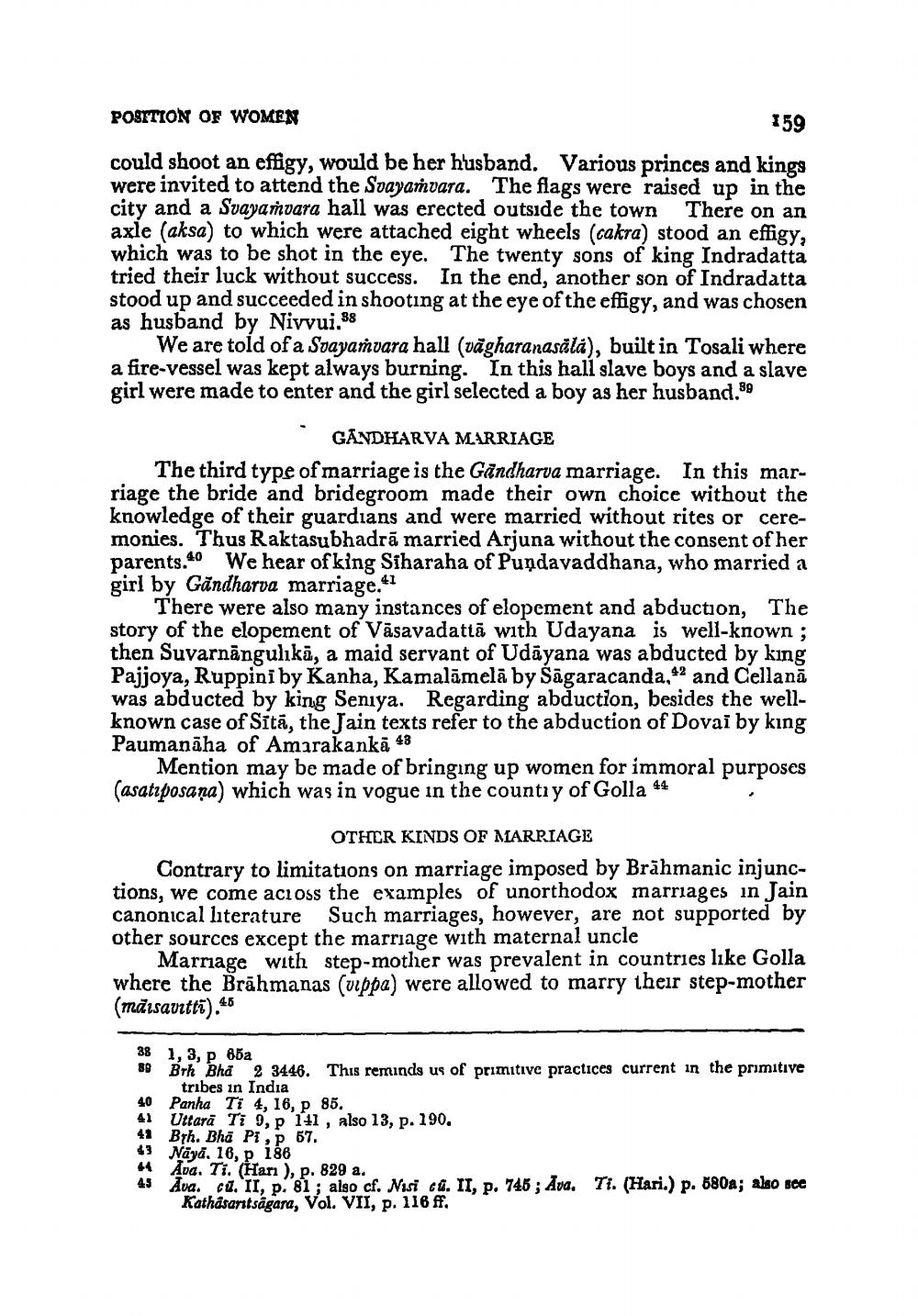________________
POSETION OF WOMEN
159
could shoot an effigy, would be her husband. Various princes and kings were invited to attend the Svayamvara. The flags were raised up in the city and a Svayamvara hall was erected outside the town There on an axle (aksa) to which were attached eight wheels (cakra) stood an effigy, which was to be shot in the eye. The twenty sons of king Indradatta tried their luck without success. In the end, another son of Indradatta stood up and succeeded in shooting at the eye of the effigy, and was chosen as husband by Nivvui.88
We are told of a Svayamvara hall (vägharanasila), built in Tosali where a fire-vessel was kept always burning. In this hall slave boys and a slave girl were made to enter and the girl selected a boy as her husband.39
GANDHARVA MARRIAGE The third type of marriage is the Gandharva marriage. In this marriage the bride and bridegroom made their own choice without the knowledge of their guardians and were married without rites or ceremonies. Thus Raktasubhadrā married Arjuna without the consent of her parents.40 We hear of king Siharaha of Pundavaddhana, who married a girl by Gāndharva marriage.41
There were also many instances of elopement and abduction, The story of the elopement of Vāsavadattā with Udayana is well-known; then Suvarnängulikā, a maid servant of Udayana was abducted by king Pajjoya, Ruppini by Kanha, Kamalāmelā by Sāgaracanda, 42 and Cellanā was abducted by king Seniya. Regarding abduction, besides the wellknown case of Sītā, the Tain texts refer to the abduction of Dovai by king Paumanäha of Amırakankā 48
Mention may be made of bringing up women for immoral purposes Casatzposana) which was in vogue in the country of Golla 44
OTHER KINDS OF MARRIAGE Contrary to limitations on marriage imposed by Brāhmanic injunctions, we come across the examples of unorthodox marriages in Jain canonical literature Such marriages, however, are not supported by other sources except the marriage with maternal uncle
Marriage with step-mother was prevalent in countries like Golla where the Brāhmanas (uippa) were allowed to marry their step-mother (mäisavrtti).46
38 1, 3, p 65a 89 Brh Bha 2 3446. This reminds us of primitive practices current in the primitive
tribes in India 40 Panha Ti 4, 16, P 85. 41 Uttarā Ti 9, p 141 , also 13, p. 190. 41 Bth. Bhā Pi, P 57.
Nāyā, 16, p 186 44 Ava. Ti. (Hanı), p. 829 a. 43
Ava. cu. II, p. 81; algo cf. Nisi cll. II, p. 745 ; Ava. Ti. (Hari.) p. 580a; also see
Kathasartsägara, Vol. VII, p. 116 ff.




